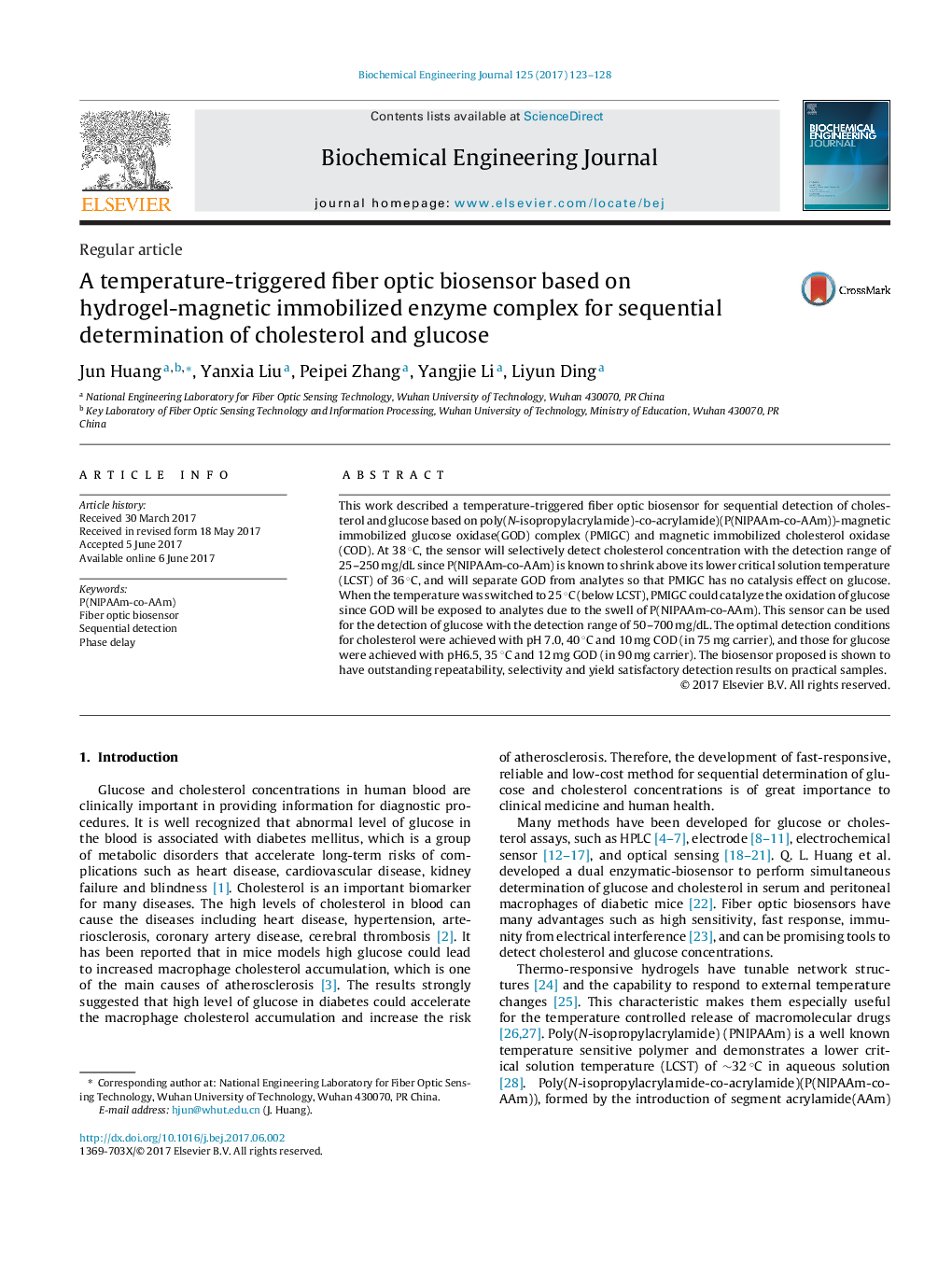| Article ID | Journal | Published Year | Pages | File Type |
|---|---|---|---|---|
| 4752131 | Biochemical Engineering Journal | 2017 | 6 Pages |
â¢Hydrogen-magnetic immobilized GOD complex was prepared.â¢A fiber optic sensor based on PMIGC and COD was developed.â¢The sensor can detect cholesterol and glucose sequentially.â¢The sensor has good properties and can be used for real samples.
This work described a temperature-triggered fiber optic biosensor for sequential detection of cholesterol and glucose based on poly(N-isopropylacrylamide)-co-acrylamide)(P(NIPAAm-co-AAm))-magnetic immobilized glucose oxidase(GOD) complex (PMIGC) and magnetic immobilized cholesterol oxidase (COD). At 38 °C, the sensor will selectively detect cholesterol concentration with the detection range of 25-250 mg/dL since P(NIPAAm-co-AAm) is known to shrink above its lower critical solution temperature (LCST) of 36 °C, and will separate GOD from analytes so that PMIGC has no catalysis effect on glucose. When the temperature was switched to 25 °C (below LCST), PMIGC could catalyze the oxidation of glucose since GOD will be exposed to analytes due to the swell of P(NIPAAm-co-AAm). This sensor can be used for the detection of glucose with the detection range of 50-700 mg/dL. The optimal detection conditions for cholesterol were achieved with pH 7.0, 40 °C and 10 mg COD (in 75 mg carrier), and those for glucose were achieved with pH6.5, 35 °C and 12 mg GOD (in 90 mg carrier). The biosensor proposed is shown to have outstanding repeatability, selectivity and yield satisfactory detection results on practical samples.
Graphical abstractDownload high-res image (110KB)Download full-size imageA fiber optic biosensor was developed to perform the sequential detection of cholesterol and glucose at different temperature (38 °C and 25 °C)
